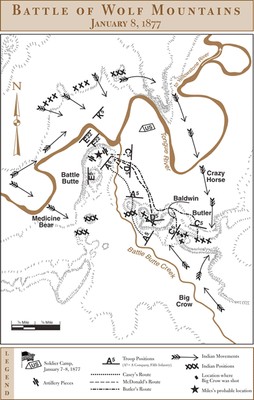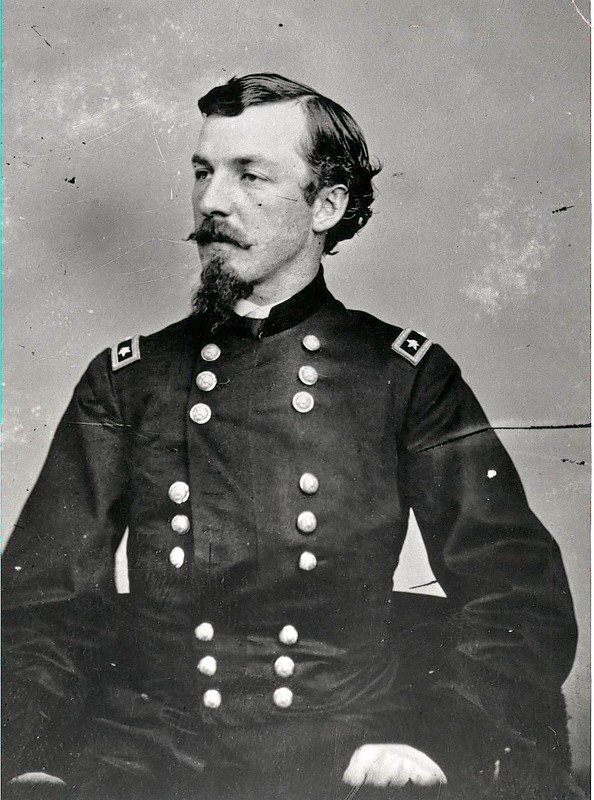The Battle of Wolf Mountain
Introduction
Text-to-speech Audio
Images
Wolf Mountain as seen from below.

Battle of Wolf Mountain Movements

Formal Picture of Nelson Miles

Backstory and Context
Text-to-speech Audio
Following the defeat of Gen. Custer's forces at Little Bighorn by Indians of the Northern Plains the United States government was spurred into action. They responded by sending over 2,500 men into the Powder River area to chase down the Little Bighorn Indians. In the Fall of 1876, Colonel Nelson Miles was in pursuit of Sioux warriors under the command of Crazy Horse. In October, Colonel Miles had captured an estimated 2,000 Sioux warriors and sent them back to the reservations, while Colonel Nelson Miles established camp and burdened the harsh winter that was to ensue. The soldiers commanded by Colonel Nelson Miles established an encampment to the west of the Tongue River on the eastern half of the battlefield. The next day, an estimated 800 braves under the command of Crazy Horse attacked Colonel Nelson Miles's encampment. The attack was pushed back, due to the clever tactic on Colonel Miles's part, by concealing howitzer guns on wagons. The Indian Warriors however, only retreated to regroup on the surrounding bluffs holding the key terrain and over watch upon Colonel Miles and his men. Colonel Miles's men then attacked the Indian Warriors positions and during the cover of a snow storm, ex filtrated the battle area, saving their chance to fight another day.
Col. Miles had attempted to negotiate with the Sioux from his outpost on several occasions, however, Crow scouts working for him attacked a group of Sioux as they approached the camp. Miles' attempts at apologized were no use and the Sioux began harassing the camp for over a month before Miles sent a sizable force to subdue them. The ensuing battle would come to be known as the Battle of Wolf Mountain.
The battle began on January 8,1877 an estimated 800 braves under the command of Crazy Horse attacked Colonel Nelson Miles's encampment. The attack was pushed back, due to the clever tactic on Colonel Miles's part, by concealing howitzer guns on wagons. The Indian Warriors however, only retreated to regroup on the surrounding bluffs holding the key terrain and over watch upon Colonel Miles and his men. Colonel Miles's men then attacked the Indian Warriors positions and during the cover of a snow storm, ex filtrated the battle area, saving their chance to fight another day. However, during the Spring season, many of the Indian Warriors surrenderd at Fort Robinson in Nebraska along with Crazy Horse himself. The battle site is located today in Rosebud County, approximatley 15 miles from Birney Montana. Much of the area, besides the improved road is unchanged since the battle in 1877.
Sources
Allison, William T., Jeffrey Grey, and Janet G. Valentine. American Military History: A Survey from Colonial Times to the Present. Upper Saddle River, NJ: Pearson Education, Inc., 2007. 187. Print. http://visitmt.com/listing/categories_NET/MoreInfo.aspx?IDRRecordID=17466&siteid=0 http://tps.cr.nps.gov/nhl/detail.cfm?ResourceId=1926966093&ResourceType=Site
Kansas Historical Society
